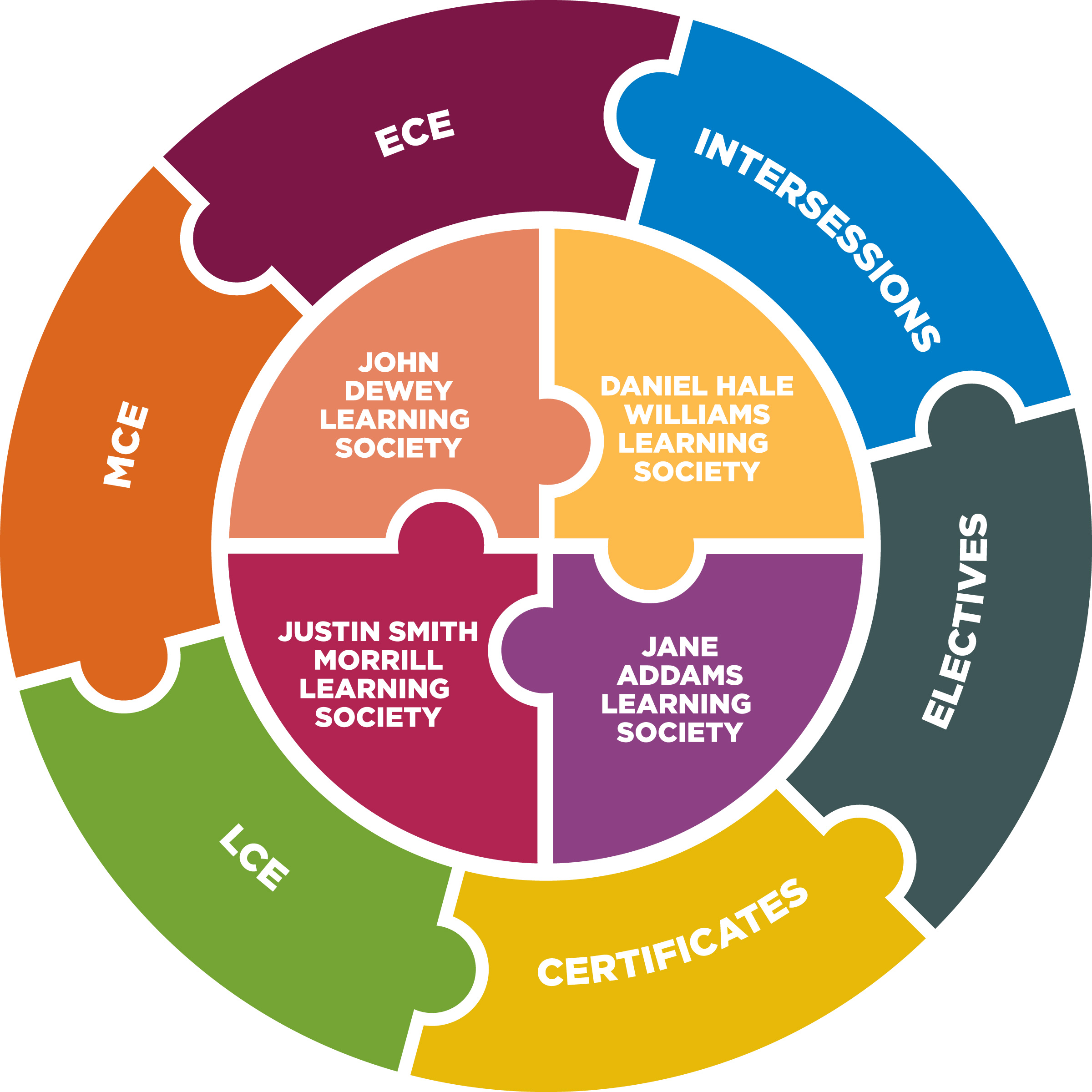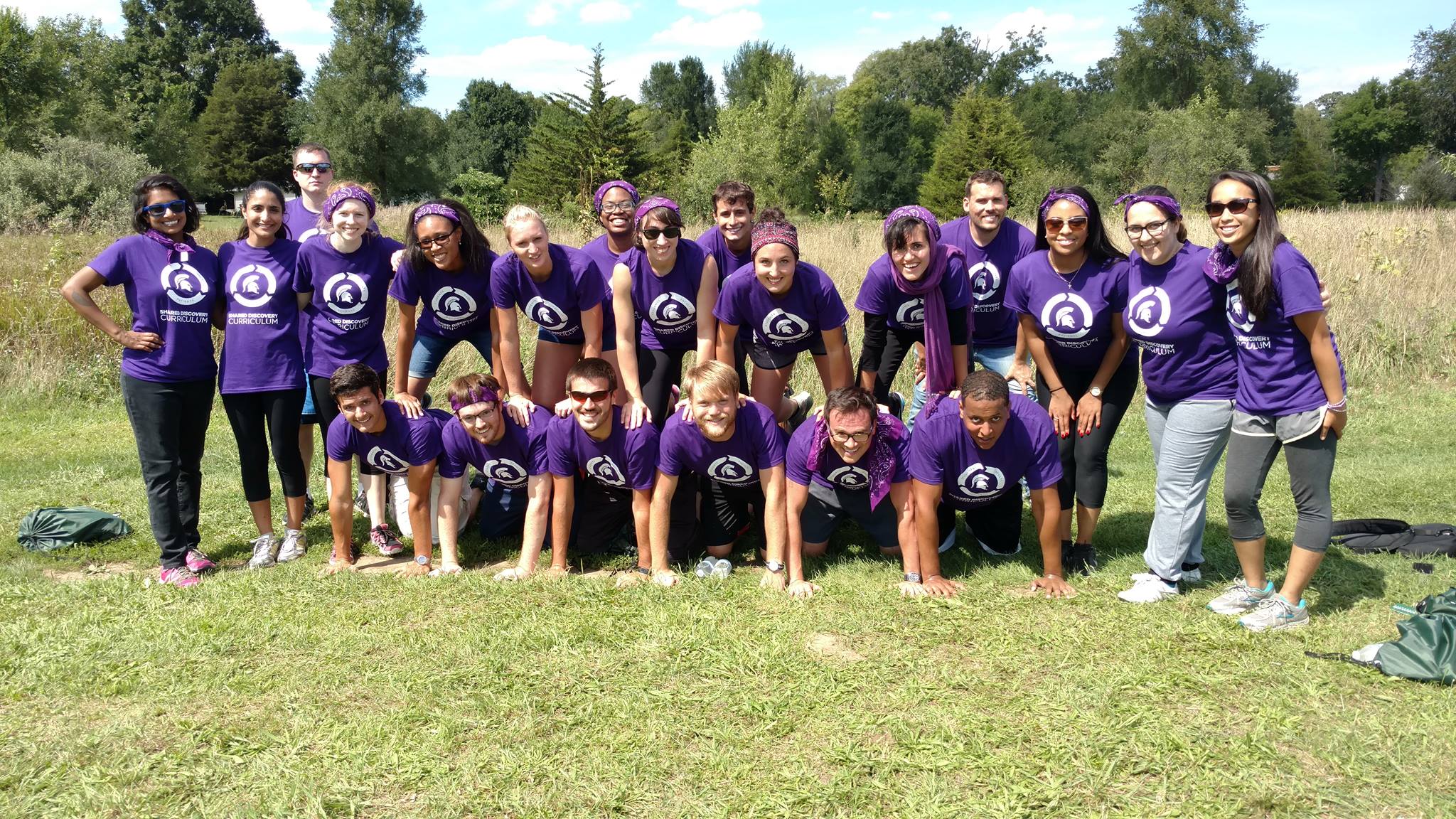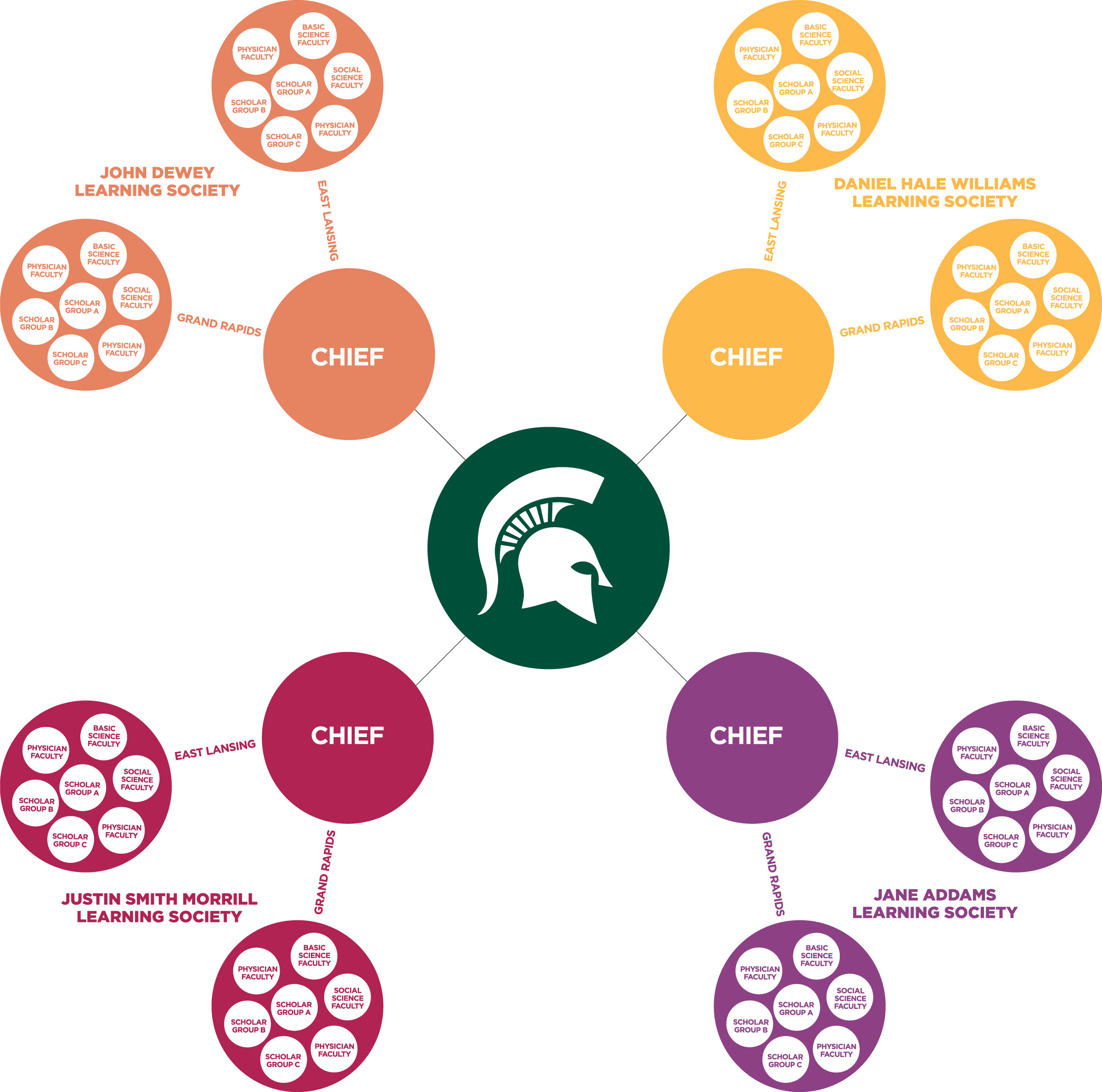The Academy and Learning Societies
 At the core of the Shared Discovery Curriculum is the Academy, comprised of four Learning Societies of medical students and master teachers, exploring the curriculum in small and large groups, simulation and laboratories. The Academy is the intellectual and professional home of our learners and the medical education home of its Faculty Fellows.
At the core of the Shared Discovery Curriculum is the Academy, comprised of four Learning Societies of medical students and master teachers, exploring the curriculum in small and large groups, simulation and laboratories. The Academy is the intellectual and professional home of our learners and the medical education home of its Faculty Fellows.
The Academy is designed to organize and deliver several components of the curriculum, including post-clinic debriefing, problem-based learning and other small group learning experiences, student portfolio review and individual personal learning plan coaching. It also enables the delivery of specialized faculty development to promote both excellence in teaching and coaching, as well as ongoing support of scholarly endeavors.
This administrative structure enables students to interact with educators in a variety of settings over multiple years.
Learning Societies

The Learning Societies are the site of academic coordination of student learning plans as well as the home of post clinic groups that integrate and contextualize students’ experiences in clinic with the programmed content of the curriculum. Each learning society is composed of smaller Scholar Groups of 8-10 students supported by a lead clinical faculty member and other basic/social clinical science faculty. The four Learning Societies include basic scientists, social scientists, bioethicists and physicians. Faculty members within the learning societies serve as small group leaders and as advisors. On a regular basis, they review progress through the curriculum and coach students in the development of an individual learning plan that personalizes their educational journey.
Each week, Learning Society Fellows will debrief students’ clinical experiences, lead small groups, teach clinical and necessary science, observe clinical skills performance in simulation or in patient care environments, and hold informal office hours. Behind the scenes, Learning Society Fellows create curricular offerings and engage in specific faculty development to build their skills in curriculum design and delivery, small group teaching and facilitation, and learner coaching and assessment. The learning societies enable the development of longitudinal, trusting relationships for students with each other and with faculty to provide a rich collegial environment for educators that facilitates ongoing mentoring and scholarly collaboration.

Learning societies promote active, student-centered adult learning, and provide a natural model for integrated interdisciplinary education. It is a more personalized medical education and fosters and environment of shared discovery for students and educators.
What happens in the learning societies?
- Post-clinic debriefing
- Small group instruction
- Portfolio development
- Individual learning plan review
- Professional socialization and career development

